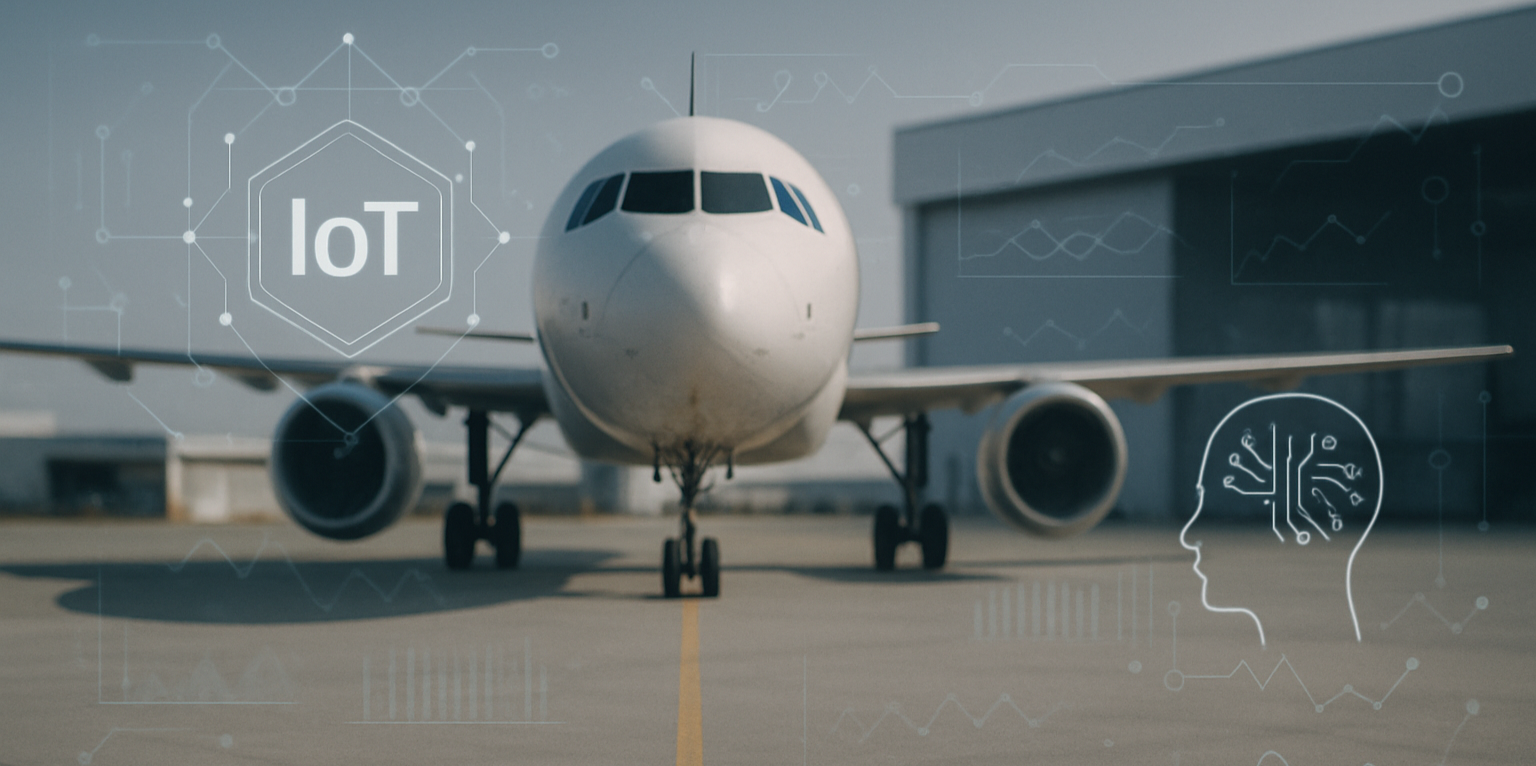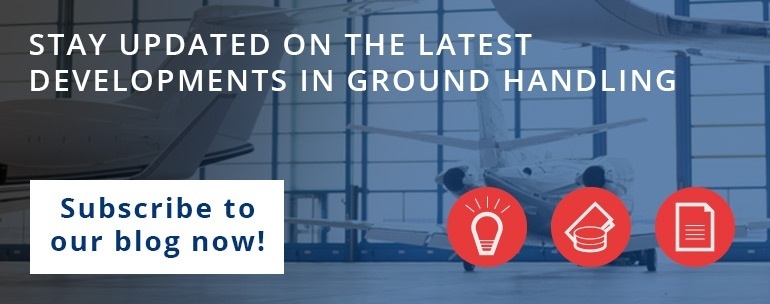With the artificial intelligence revolution increasingly gaining momentum, AI is set to deeply transform most, if not all, industries, including all sectors of aviation. How is the AI revolution currently shaping the future of the aviation industry? Explore with us some of the key innovations in aviation that are driven by artificial intelligence technologies.
AI Revolution: Artificial Intelligence in the Aviation Industry
Artificial intelligence (AI), autonomous vehicles, voice assistants and quadruped or even humanoid robots – what once used to be science fiction scenarios of the future, has already become reality today. Especially large language models (LLMs) such as ChatGPT and AI image generators have recently risen to prominence and entered everyday working life in no time. In the long run, the AI revolution is most likely to profoundly transform industries. However, this transformation will, of course, not occur overnight.
When it comes to the aviation industry, the AI revolution has the potential to transform all areas of aviation – from the airline industry, the aircraft industry and aircraft maintenance, via airports and airport logistics, to sustainability in aviation.
However, as any new technology, artificial intelligence is, of course, not without its challenges. Ethical implications, the complexity of machine learning and neural networks, as well as cybersecurity issues need to be addressed and carefully considered, among others. Nonetheless, the aviation industry can greatly profit from leveraging the advantages of AI and integrating it into its operations.
With its “Artificial Intelligence Roadmap”, a living document constantly updated to new developments, the European Union Aviation Safety Agency (EASA) aims to ensure a beneficial integration of artificial intelligence technologies into aviation operations, despite their challenges. In addition, EASA has also published Artificial Intelligence Concept Papers, outlining the adaptation of existing aviation rules to changing circumstances in the age of AI.
AI in Aviation: Key Innovations in the Aviation Industry

Digitalization, also known as digital transformation or digital revolution, has for some time now played a central role in aviation. The next step onwards and a key trend that is currently shaping the future of the aviation industry, is the integration of artificial intelligence into aviation operations. How can aviation benefit from integrating AI into its operations? Let’s take a closer look at some of the key AI innovations that are set to redefine aviation, for instance by improving safety, efficiency, or sustainability:
Artificial Intelligence and Data Analytics in Aviation
Artificial intelligence and data analytics are increasingly gaining in importance in the aviation sector. One of the central advantages of artificial intelligence consists in its ability to process immense amounts of data and learn from them. AI can generate valuable insights from raw data, processing data for informed decision-making, for detecting patterns, and for developing predictions. All of these can be highly beneficial in different areas of aviation.
In airport logistics, AI is, for instance, increasingly employed for predicting and managing logistical needs. Machine learning models and AI-powered algorithms can, for instance, accurately forecast cargo volume trends and predict peak periods of cargo flow. This helps airports to optimize their use of space and resources as well as to prepare in advance for temporary increases in demand, thereby significantly increasing efficiency and reducing delays.
Additionally, artificial intelligence can assist in customs and security screening. Predictive analytics can here serve to identify high-risk shipment and to minimize the time spent on inspections. Moreover, real-time data analytics enables a more dynamic allocation of resources, thus ensuring seamless operations across different airport departments, from cargo to passenger management.
AI-based predictive analytics can also be used in aircraft maintenance, for instance to optimize maintenance schedules. Another application case is preventative maintenance, where AI can predict the remaining lifespan of aircraft parts, thereby reducing costs and minimizing delays.
Yet another use case is the optimization of flight operations, for instance through the prediction of turbulence or crew management systems that use AI-algorithms to increase reliability and efficiency of qualified personnel. Through an analysis of data and customer behavior, artificial intelligence can further optimize revenue management of airports and airlines, respectively.
AI in Aviation: Automation and Autonomization
Broadly speaking, AI can be employed to analyse data, automate processes, or to act autonomously. AI-driven automation and autonomization of processes can significantly enhance efficiency and reduce costs in aviation.
Automation and robotics are already revolutionizing airport logistics today: Automated baggage handling systems as well as self-driving vehicles for cargo transport are already becoming common tools – and automated guided vehicles (AGVs) are also already being used for passenger transport within the airport premises. Further autonomous vehicles already being employed include autonomous snow-clearing vehicles for runways or automated systems for attaching bridges to the aircraft.
Airports are also increasingly using autonomous tugs to enhance the efficiency of ground handling operations. With a fully-electric, towbarless Mototok tug, loading and unloading aircraft is not only both quick and safe, but also largely automated.
And there are additional options to further automate your Mototok: The automated guided vehicle (AGV) steering option for our tugs works with an automatic steering control through camera guidance. Fully programmable, it operates with highest precision and safety, reducing human error to a minimum. Moreover, our Intelligent Nosegear Protection System (I-NPS) prevents damage to the nose gear in shunting and pushback operations with an Auto Countersteering Function.
Artificial Intelligence and the Rise of Smart Airports
Closely connected to the increasing degree of digitalization and the use of AI, is the rise of smart airports. With the help of the Internet of Things (IoT) and the 5G network, as well as artificial intelligence technologies and data analytics, smart airports create interconnected and integrated systems in order to streamline airport operations.
In smart airports, IoT sensors can track baggage, cargo, or even passengers in real time – thereby collecting valuable data that AI and data analytics can use to optimize airport logistics operations. Through real-time tracking of shipments, IoT sensors can, for instance, improve the efficiency of cargo handling and ensure that time-sensitive materials are handled immediately. In order to increase safety, AI can in smart airports further be used in surveillance and safety risk management.
Smart airport infrastructure can moreover significantly increase customer experience, rendering airports more efficient, safer, and more user-friendly. Examples include automated check-in services and digital or intelligent security solutions, including biometric identification technology like facial recognition systems or fingerprint scanning. Additionally, AI chatbots and virtual assistants can provide personalized passenger services.
Artificial Intelligence and Sustainability in Aviation
As an increasingly pressing concern and an enormous challenge to the industry, sustainability is among the key trends in the aviation industry. Advances in technology, including artificial intelligence, are already contributing to more efficient and sustainable aviation operations and will continue to play a decisive role in shaping a greener future.
AI can be employed for more efficient air traffic management and the optimization of flight trajectories, for instance by analysing weather conditions, wind patterns and other relevant air traffic data. This helps reduce flight times, fuel consumption, and carbon emissions, thus contributing to the net zero goal of the aviation industry. AI tools are, moreover, frequently used in aircraft design and engineering, where algorithms and machine learning can improve the sustainability of the aircraft.
Conclusion: The AI Revolution in the Aviation Industry
The AI revolution is set to profoundly transform all sectors of the aviation industry – from the airline industry, aircraft industry and aircraft maintenance, via airports and airport logistics, to sustainability in aviation. While there are still quite a few challenges, the aviation industry can greatly profit from a beneficial integration of AI solutions into its operations. AI can, for instance, improve efficiency, safety, sustainability, and customer experience.
We have focused on four trends driven by AI that are currently shaping the future of aviation:
- Artificial intelligence and data analytics can serve to optimize processes, for instance in airport logistics and aircraft maintenance.
- Automation and autonomization can significantly improve efficiency and reduce costs in aviation.
- In smart airports, AI serves, for instance, to optimize airport logistics, safety risk management, and customer experience.
- Artificial intelligence can be an enabling force in making aviation more sustainable and shaping a greener future.
While the AI revolution will not reshape the aviation industry overnight, there are already several tools available today that help to significantly increase efficiency – such as largely automatic aircraft tugs to improve your ground handling operations.



Comments